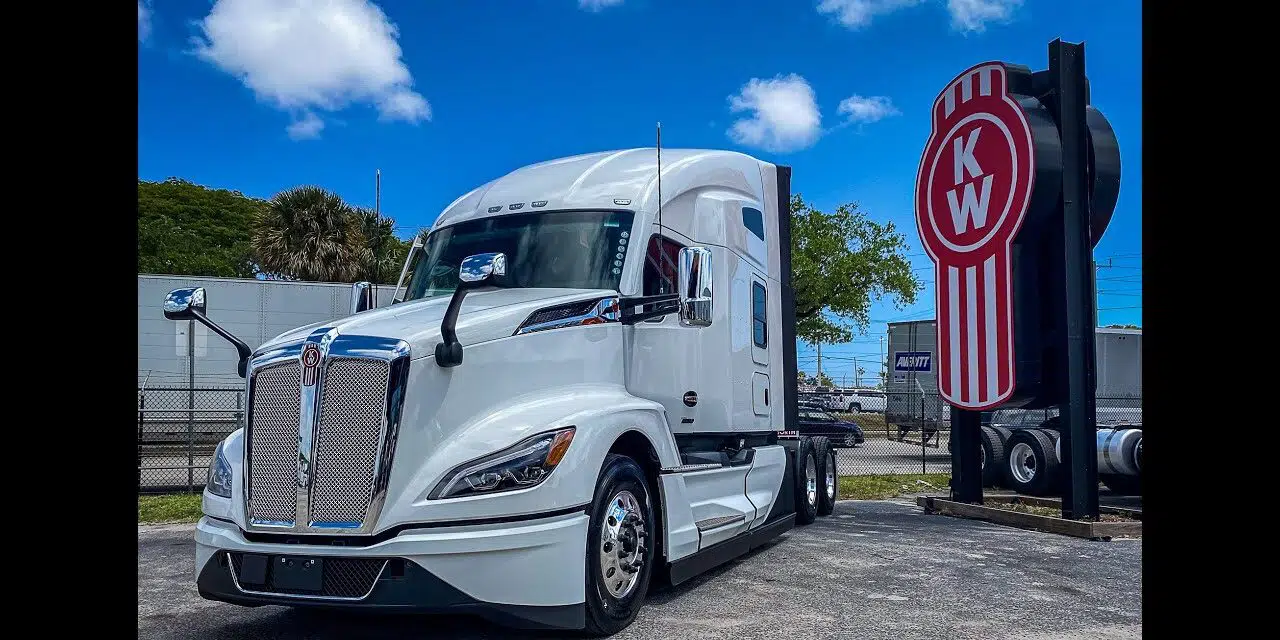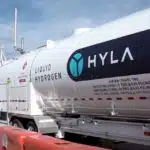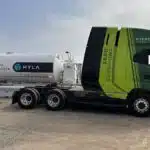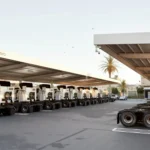
The shortage of truck drivers in the United States has gotten so bad that companies are trying to bring in drivers from abroad like never before.
Holly McCormick is coordinating with a South African agency to find international drivers for the first time in her 10-year trucking career. McCormick, a recruiter at Groendyke Transport Inc., has quadrupled her budget since the outbreak and is still having difficulty finding candidates.
The United States has been dealing with a chronic driver shortage for years, but the pandemic exacerbated the issue, sending demand for shipping goods skyrocketing while sparking a rise in early retirements. The ramifications have been both catastrophic and far-reaching: There have been gasoline outages at filling stations. Airports are running out on jet fuel. A stainless-steel manufacturer declared a state of emergency. In addition, lumber costs reached an all-time high, with some suppliers blaming delivery delays in part.
According to McCormick, “if we can’t move these things, our industry practically shuts down.”
Trucking has emerged as one of the most serious bottlenecks in a supply chain that has all but unraveled as a result of the pandemic, aggravating supply shortages across industries, increasing inflation further, and endangering the broader economic recovery.
“By far, we are experiencing the biggest driver shortage in recent history,” said Jose Gomez-Urquiza, chief executive officer of Visa Solutions, an immigration service specializing in the transportation business.
As a result, demand for Visa Solutions’ services from the trucking business has more than doubled since the epidemic began, and “this is 100 percent due to the driver shortage,” he claims.
Immigration Issues
Bringing in more foreign workers faces a number of challenges, including visa restrictions and complicated immigration rules, but trucking advocates see an opportunity to overcome some of those challenges now that the Biden Administration has established a task force to address supply chain issues impeding economic recovery.
Transportation Secretary Pete Buttigieg, Labor Secretary Marty Walsh, and Meera Joshi, deputy administrator of the Federal Motor Carrier Safety Administration, met with trucking industry representatives in July to explore ways to increase driver retention and reduce turnover. Among the improvements sought by the industry are decreasing the minimum age for interstate drivers from 21 to 18 and adding trucking to the list of companies exempt from elements of the Department of Labor’s immigration certification procedure.
That would be great news for Andre LeBlanc, vice president of operations at Petroleum Marketing Group, which manages fuel distribution to over 1,300 gas stations, largely in the northeast. Some of those terminals have had shortages for as long as 12 hours because “we simply can’t re-supply them because we don’t have the competent drivers,” he said, estimating that the group requires approximately 40 more to operate at full capacity. Meanwhile, only three of the 24 drivers LeBlanc has attempted to hire through a federal immigration program have completed all stages of the verification process.
“Right now, we have 21 competent drivers who can come to this country the right manner and are willing to come here and address this problem,” he stated. “We don’t appear to be able to obtain an answer on what we need to do to move it forward.”
In addition to the widespread early retirements, last year’s lockdowns made it more difficult for new drivers to enroll in commercial-trucking schools and obtain a license. Companies have increased pay, signing bonuses, and benefits. So far, their efforts have not been sufficient to recruit domestic employees to an industry with long hours, a poor life-work balance, and a well-entrenched boom-bust cycle.
According to the American Trucking Associations, the United States was already 60,000 drivers short in 2019. According to Bob Costello, the group’s senior economist, that figure is expected to rise to 100,000 by 2023.
Check out Truckstop.com’s Market Demand Index to get a sense of how severe the supply-demand imbalance is. While the index has cooled slightly after reaching an all-time high in May, it is still up more than fourfold from this time last year.
The spot trucking market is expected to remain tighter than historical norms.
According to Craig Fuller, the founder, and CEO of the technology and information firm Freightwaves, this explains why companies are increasingly turning to drivers from South Africa and Canada. Workers from these nations frequently understand English, making it easier to obtain the required license.
However, Fuller points out that simply bringing in additional foreign workers will not fix all of the problems that are causing snarls in the business. He also stated that there is a capacity shortage, or an unusually low number of trucks on the road, at the same time that demand has increased.
“Even if there were drivers, there is a finite amount of trucks at any given time, so you have two problems,” Fuller explained.
Meanwhile, Andrew Owens, CEO of A&M Transport, is looking for immigrant labor from Mexico, Europe, South Africa, and Canada to help with his driver shortfall. In the previous year, the delivery company has hired 20 foreign workers, but Owens would like to hire at least a dozen more to meet demand. He’s been waiting for permissions for a contract with 15 workers since 2017, with only two of them currently going through the process that he was told would take 13 to 18 months.
Owens stated, “They all have proven truck driving experience.” “All we have to do is teach them to drive on the right side of the road, and they’ll be fine.”











